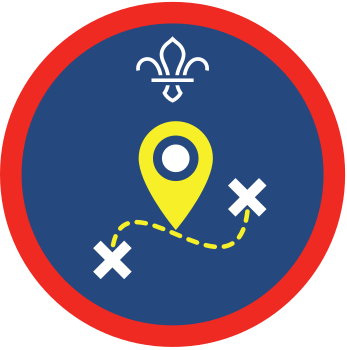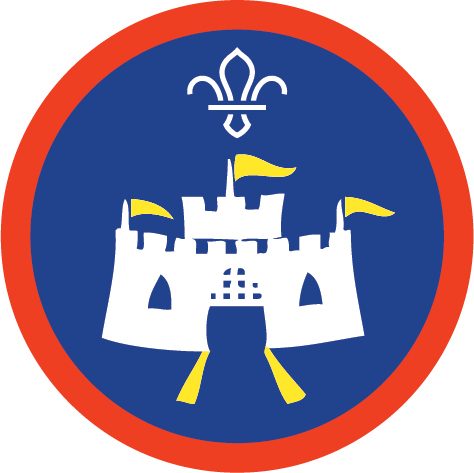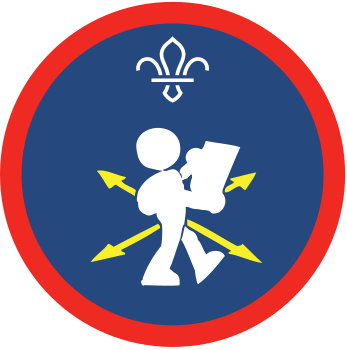
Treasure hunt
You’ll need
- Compass
- Paper maps of the local area
- Lists of grid references
- Sealable Containers
- Balloons in multiple colours
- Mobile phones for emergencies
Before you begin
- Use the safety checklist to help you plan and risk assess your activity. Additional help to carry out your risk assessment, including examples can be found here. Don’t forget to make sure all young people and adults involved in the activity know how to take part safely.
- Carefully risk assess the area in which you run this activity, especially places where there’s tricky terrain or roads. Think carefully about your adult to young person ratio. You can use the Safety checklist to help you plan.
- Make sure you’ll have enough adult helpers. You may need some parents and carers to help if you’re short on helpers.
Preparing for the treasure hunt
- You’ll need to set a start and end point for this activity. These could be different places or one familiar location, such as your meeting place. Make sure to set a time limit to your activity and a time and place to meet back.
- Each group should have means to contact the person leading the activity in the event of an emergency.
- Set locations for the checkpoints within a 2km radius of your meeting place and write down the six-figure Ordinance Survey coordinates of each location. For how to do this, read our Getting coordinated activity.
- At each location, hide a sealed container with balloons inside. These'll represent the 'treasure' that your groups are searching for.
- In each container the balloons should all be the same colour, unique to that checkpoint. Make a note of the colours to keep track of where all the teams have been.
Run the activity
- Congratulate the group for becoming treasure hunters for the day! Explain that everyone will be teaming up to search for ‘treasure’. Each team should be given a list of checkpoints in the form of map coordinates, where they will find balloons that they will then inflate to secure their 'treasure'.
- Everyone should split into small teams. Each team should have a map, a list of coordinates and a compass. Make sure everyone has appropriate clothing and torches, if necessary.
- Give all the teams time to look at their coordinates and plan their route before setting off.
- Make sure everyone knows what time to return to your meeting point. Consider rotating adults between the different checkpoints to help supervise everyone’s progress.
- Once the time is up, each team should return to the meeting place and count how many pieces of 'treasure' they managed to find.
Reflection
This activity was about developing skills and solving problems by challenging yourself to catch ‘em all. This activity took you out in your local area. Did you discover any new paths or routes that you wouldn’t have used before? Do you feel like you know your way around your local area now? Did you plan your route between all the checkpoints well? What would you do differently if you were to participate in this activity again?
This activity developed your map reading skills. Was it difficult to locate the checkpoints? Do you feel more confident reading and using grid references now? Were there any times you found yourself in a tricky situation? What did you do to get out of it? Thinking about the problems one at a time can often be the best approach.
Safety
All activities must be safely managed. You must complete a thorough risk assessment and take appropriate steps to reduce risk. Use the safety checklist to help you plan and risk assess your activity. Always get approval for the activity, and have suitable supervision and an InTouch process.
- Road safety
Manage groups carefully when near or on roads. Consider adult supervision and additional equipment (such as lights and high visibility clothing) in your risk assessment.
- Outdoor activities
You must have permission to use the location. Always check the weather forecast, and inform parents and carers of any change in venue.
- Visits away from your meeting place
Complete a thorough risk assessment and include hazards, such as roads, woodland, plants, animals, and bodies of water (for example, rivers, ponds, lakes, and seas). You’ll probably need more adult helpers than usual. Your risk assessment should include how many adults you need. The young people to adult ratios are a minimum requirement. When you do your risk assessment, you might decide that you need more adults than the ratio specifies. Think about extra equipment that you may need to take with you, such as high visibility clothing, a first aid kit, water, and waterproofs. Throughout the activity, watch out for changes in the weather and do regular headcounts.
- Snow and ice
Be careful when activities involve snow and ice. Check surfaces and reduce the risk of slipping where possible. Have appropriate supervision for this activity.
This activity can be led by you or someone else in Scouts
- You can run this as a time-based competition to see who can capture all the treasure by collecting one balloon in every colour and returning to your meeting place first. Make sure the amount of time is suitable for your group.
- You may want to pre-mark the checkpoints on the maps to remove the challenge of locating the grid references.
- Consider making this activity more challenging by running this activity in an area that is not familiar to your group.
- Make sure everyone is comfortable in the groups they are in and that everyone will get a chance to read the map.
- Assess the needs of your groups and consider mobility issues when deciding where to place your checkpoints.
All Scout activities should be inclusive and accessible.
Consider using this activity as part of a session on improving navigation and map reading skills. This could be a fun and safe way of helping improve night navigation skills by staying in a local and familiar area.


